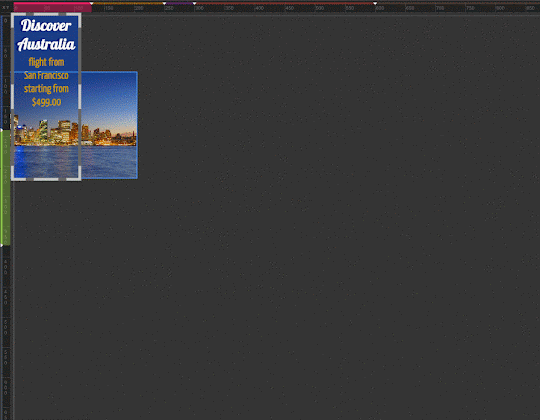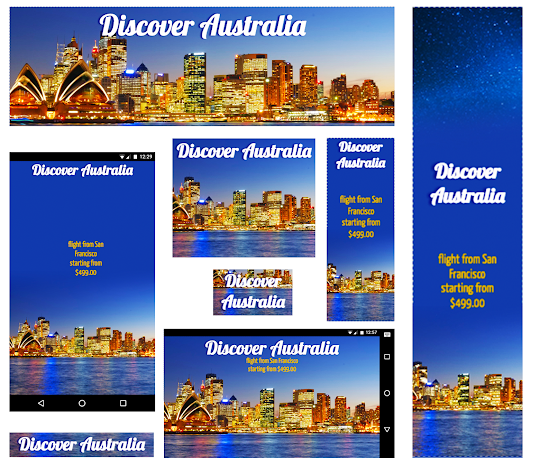Three new ways for brands to succeed with search in a mobile-first world
Mobile is where search starts today for many consumers. Last year for the first time, more Google searches took place on smartphones than on desktops and laptops globally1. Mobile is where consumer micro-moments really thrive: in the I-want-to-know, I-want-to-go, I-want-to-do and I-want-to-buy moments where decisions are made and preferences are shaped. Brands that help consumers in these intent-rich moments will win.
To help brands be there and be useful, we're pleased to announce that support for three new mobile tools are in the works for DoubleClick Search users: AdWords expanded text ads, call-only ads and call metrics.
Optimized ads for the mobile-first world
Expanded text ads were announced yesterday by Sridhar Ramaswamy, Senior Vice President of Ads and Commerce at Google, during his Google Performance Summit Keynote. They're the biggest change to mobile ad formats since AdWords launched over 15 years ago.
Expanded text ads give advertisers improved control over the longer headline field, increased character limits across all text fields, and a simplified display URL workflow.
Based on early testing, some advertisers reported increases in clickthrough rates of up to 20% compared to current text ads. Expanded text ads in AdWords provide nearly 50% more ad space, so you can showcase more information about your products and services right on the search results page.
Expanded text ads aren't available widely just yet. We’re working with the AdWords team and we plan to have full support quickly once campaign management for expanded text ads becomes publicly available.
Until then, here's what DoubleClick Search customers who are taking part in the AdWords beta can expect in three key areas:
- Campaign management: Expanded text ads won't appear in the DoubleClick Search interface at this time.
- Bid optimization: Expanded text ads are included in automated bidding for DoubleClick Search for all AdWords beta users.
- Measuring results: Engine and conversion stats for the expanded text ads will be attributed to the correct keyword in DoubleClick Search. Aggregate reporting (at the ad group level and above) will incorporate stats from expanded text ads.
Even if you're not in the AdWords beta, it's a good idea to start planning now for this upgrade. Review Google’s Creatives that Click to learn about best practices.
Connect with calls
While the mobile web and apps continue to grow, calls remain an important way for consumers to connect with your business. In fact, 33% of mobile searchers have called a business after doing a related search on their smartphones in the past three months2.
Today we’re announcing full support for AdWords call-only ads and call metrics in DoubleClick Search. Support for these features starts immediately and you should see them in your account now.
Put your business phone number and a "call now" button in your mobile search ads, and more customers will call you directly instead of visiting your web site.

These ads are a great way to connect to consumers in their I-wanna-talk-to-a-human moments. In fact, Forrester Research recommended Google solutions in its recent report Capture Customers With Click-to-Call3:
“Google has the longest tenure with click-to-call and provides the greatest reach of all possible media outlets, so we recommend building your click-to-call foundation on it.”
- Forrester Research, February 2016
Until now, call-only ads were created by selecting a checkbox in call extensions. These new call-only ads replace this option.
With call-only ads, you can bid based on the value of a call to your business, and tailor your ads for phone calls to let people know they can reach your business easily without needing to visit your site.
And, with call metrics, you can use a Google forwarding number to see how many calls were generated, how long they lasted, and other details that will help you measure the value of phone calls, right in DoubleClick Search.
Learn how to create call-only ads in DoubleClick Search in our Help Center, or discover new ways to Drive More Calls to Your Business with Google’s best practices.
Looking ahead
These three new features are our latest steps toward helping DoubleClick Search customers stay ahead in a mobile-first world. They join other mobile innovations such as cross-device conversions, cross-device bid strategies, and app-install campaigns that help you put your apps in users' hands. We hope they'll help your brand succeed with search in a mobile-first world.
Posted by Amit Varia
Product Manager, DoubleClick Search
1 Google Internal Data, for 10 countries including the US and Japan, April 2015
2 The role of mobile search on store purchases, Google/Ipsos Media CT, August 2015, n=1327 Mobile Searchers 18+, who have conducted a purchase-related search on a smartphone in the past 3 months
3 Capture Customers With Click-To-Call. Forrester Research, February 2016





